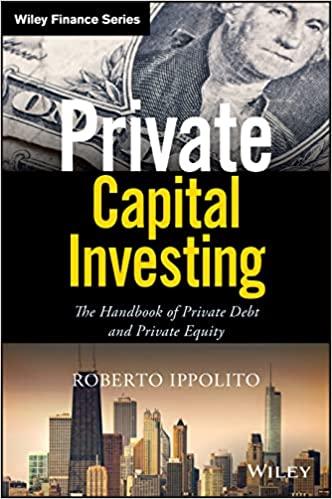Question
You are given the following information about a European call option on stock ABC: S = $40; X = $37; R = 4.5% per year,
You are given the following information about a European call option on stock ABC: S = $40; X = $37; R = 4.5% per year, continuously compounded; sigma = 53%; and T = 2 years. What is N(d2) when you use the Black-Scholes formula to price the option (choose the closest one)?
A firm has a single zero-coupon bond issue outstanding with a face value of $10 million. It matures in seven years. The current market value of the firms assets is $13 million. The volatility of the return on the firms assets is 50% per year. The risk-free rate is 6%, continuously compounded. What is the continuously compounded cost of debt (choose the closest one)?
The Black-Scholes option pricing formula is based on the assumption that stock price has constant expected return and constant return risk. True or False
Everything else equal, when the underlying assets become more volatile, the American call option (no dividend paid till expiration) value becomes higher; the value of the American put option will be also higher. True or False
Call options are more valuable when, everything else equal, the underlying asset value becomes more volatile. True or False
Step by Step Solution
There are 3 Steps involved in it
Step: 1

Get Instant Access to Expert-Tailored Solutions
See step-by-step solutions with expert insights and AI powered tools for academic success
Step: 2

Step: 3

Ace Your Homework with AI
Get the answers you need in no time with our AI-driven, step-by-step assistance
Get Started


